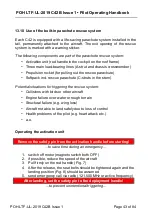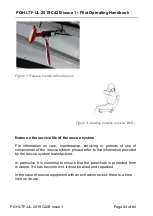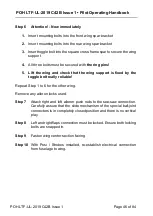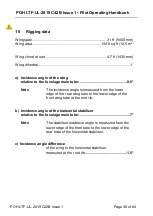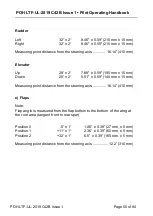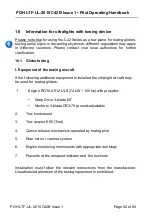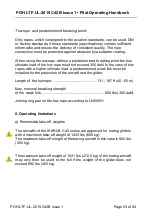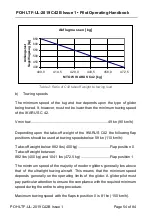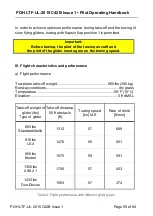
POH LTF-UL-2019 C42B Issue 1 • Pilot Operating Handbook
POH LTF-UL-2019 C42B Issue 1
Page 40 of 84
13.8 Sudden loss of engine power
I. Loss of engine power during take off
Depending upon speed and altitude, lower nose and trim to gliding speed
(approx. 65 kn (120 km/h) and flair the aircraft normally.
Do not attempt to return to airfield if altitude is
below
800 ft
after gliding
speed has been reached. At lower altitudes it is best to land straight ahead
without attempting any course corrections.
Before attempting an emergency landing in rough terrain, turn off the fuel
valve and switch off the ignition. When landing in a high vegetation (grain or
similar) reduce speed directly above the vegetation by extending the flaps to
position 2 (landing), pull stick fully aft and allow the aircraft to sink into the
vegetation.
II. Loss of engine power during crusing flight
Cross-country flights should be planned to ensure that a suitable landing
field could be reached in the case of a loss of the engine power.
Once gliding speed has been established (flap position 0 = cruising flight,
speed at 65- 68 kn / 120 - 125 km/h), look for a suitable landing field and
make your plan taking into consideration the wind conditions. The best glide
ratio is approx. 1:11 at 530 ft/min (2.7 m/s).
A lower rate of descent can be achieved with flap position 1 (take-
off/landing), at approx. 59 kn (110 km/h), however it does not result in a
better glide path.
With sufficient altitude you may attempt to restart the engine, check:
1. Fuel valve .................................................................................... O P E N
2. Magneto switches .............................................................................. O N
3. Fuel ............................................................................ S U F F I C I E N T
4. Fuel pump .......................................................................................... O N


















